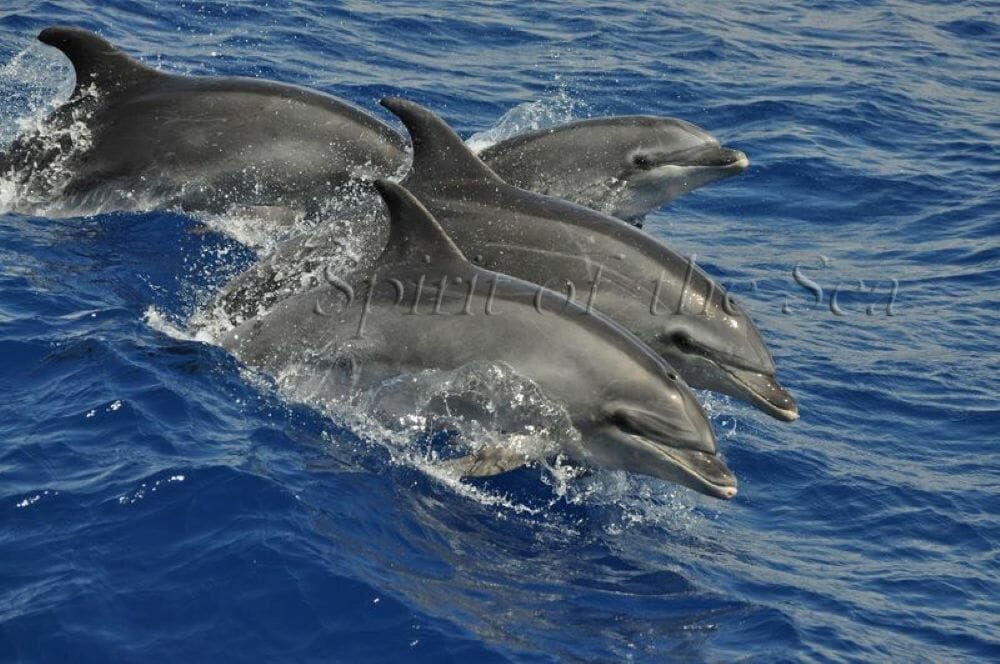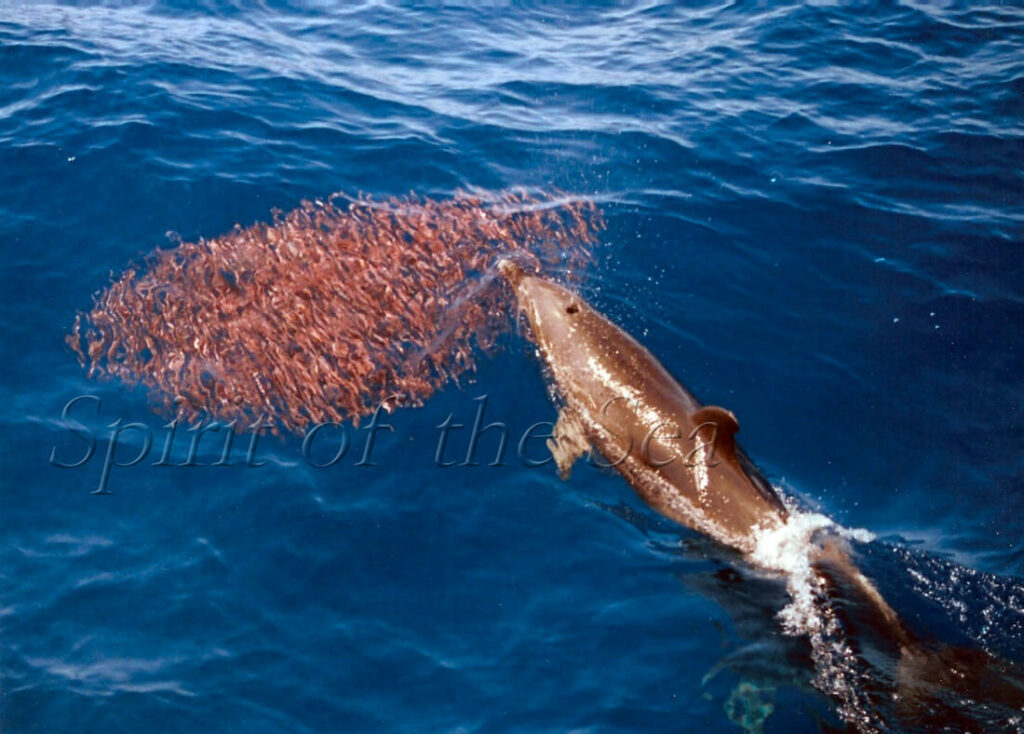Bottlenose dolphin
Sighting
Bottlenose dolphin in Gran Canaria
The bottlenose dolphin (Tursiops truncatus), also known as the bottle-nosed dolphin, is the most common species of dolphin to be seen on the Canary Islands coasts. Its worldwide fame is due to its great intelligence, sociability and natural curiosity, which is why the bottlenose dolphin in Gran Canaria has become a true icon of the marine fauna.
In Gran Canaria, the bottlenose dolphin inhabits both coastal areas and more open waters. The island offers ideal conditions for sightings during nautical excursions and whale-watching trips, due to its temperate climate and rich marine biodiversity.
These specimens swim at speeds of between 5 and 11 km/h, coming up for air every 5-8 minutes through their blowhole. In addition, they live in social groups called ‘pods’, which can include up to 12 individuals, although they occasionally join together in larger groups.
Physical characteristics of bottlenose dolphins
- Size: adults between 2 and 4 metres (some pelagic fish reach up to 5 m)
- Weight: 150 to 650 kg, depending on environment and constitution
- Longevity: females up to 40 years; males up to 30 years
- Breeding: every 2-3 years, after a gestation of 11-12 months
Intelligence and social behaviour
Bottlenose dolphins have a large and complex brain, where they use echolocation for orientation and hunting, and communicate through clicks, whistles and body movements. Each individual has a unique ‘signature whistle’, which acts as its name.
This species has demonstrated abilities such as self-recognition in mirrors, learning human gestures and tool use, suggesting a primitive form of animal culture.
Feeding and echolocation
The bottlenose dolphin in Gran Canaria feeds mainly on fish and invertebrates. It uses an advanced echolocation system, emitting clicks and listening for echoes to locate its prey even in dark or murky waters. Although its vision is excellent, its sense of smell is rather limited.
Relationship with humans in Gran Canaria
In Canarian waters, it is common for bottlenose dolphins to interact with tourist boats. They often approach boats, jump alongside them or swim in the bow, making each sighting an unforgettable experience. However, they may also approach fishing nets in search of food, which increases the risk of accidental catches.
Thanks to spirit of the sea, it is possible to organise responsible bottlenose dolphin watching trips in Gran Canaria, an activity highly valued by visitors and marine biologists alike




